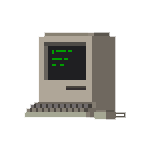Optimistic vs Pessimistic Concurrency Control
Optimistic Concurrency Control = stop signs.
Pessimistic Concurrency control = traffic lights.
Stop signs assume low contention over a resource (the intersection) and tend to yield higher throughput if that is true. Average latency does tend to suffer a bit from the overhead, however, as every single car needs to slow down a bit to check that it's not about to slam into an oncoming car or pedestrian.
Traffic lights are very explicit locks over a resource (the intersection). Traffic lights assume that there is going to be high contention. Worst-case latency can be very good since you fly through a green light at top speed, but you now have a strict lower bound on the minimum latency (the time for the green light to switch on for your direction).
When there is low contention over an intersection (e.g. very late at night) you should really convert the signal into an optimistic lock.


